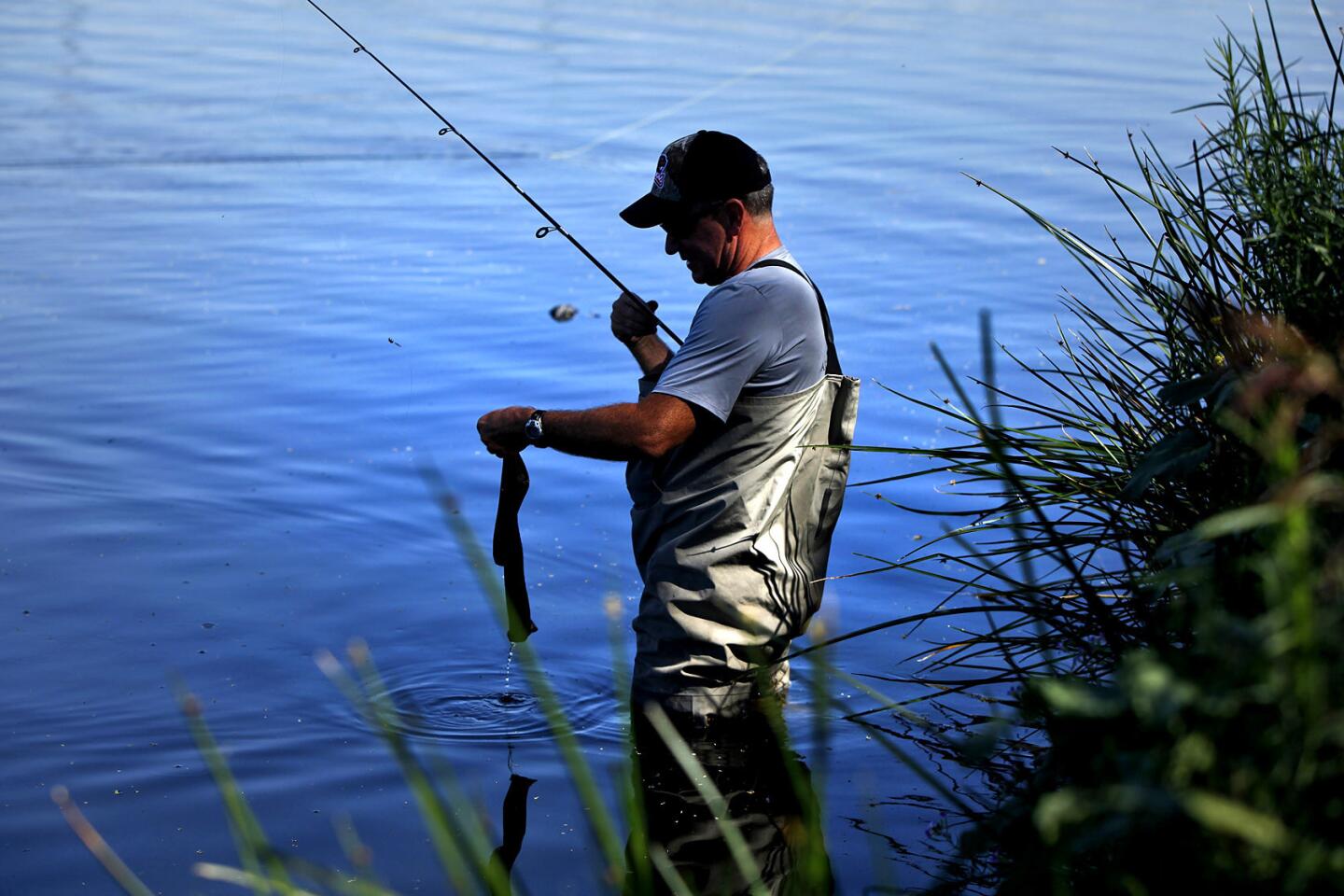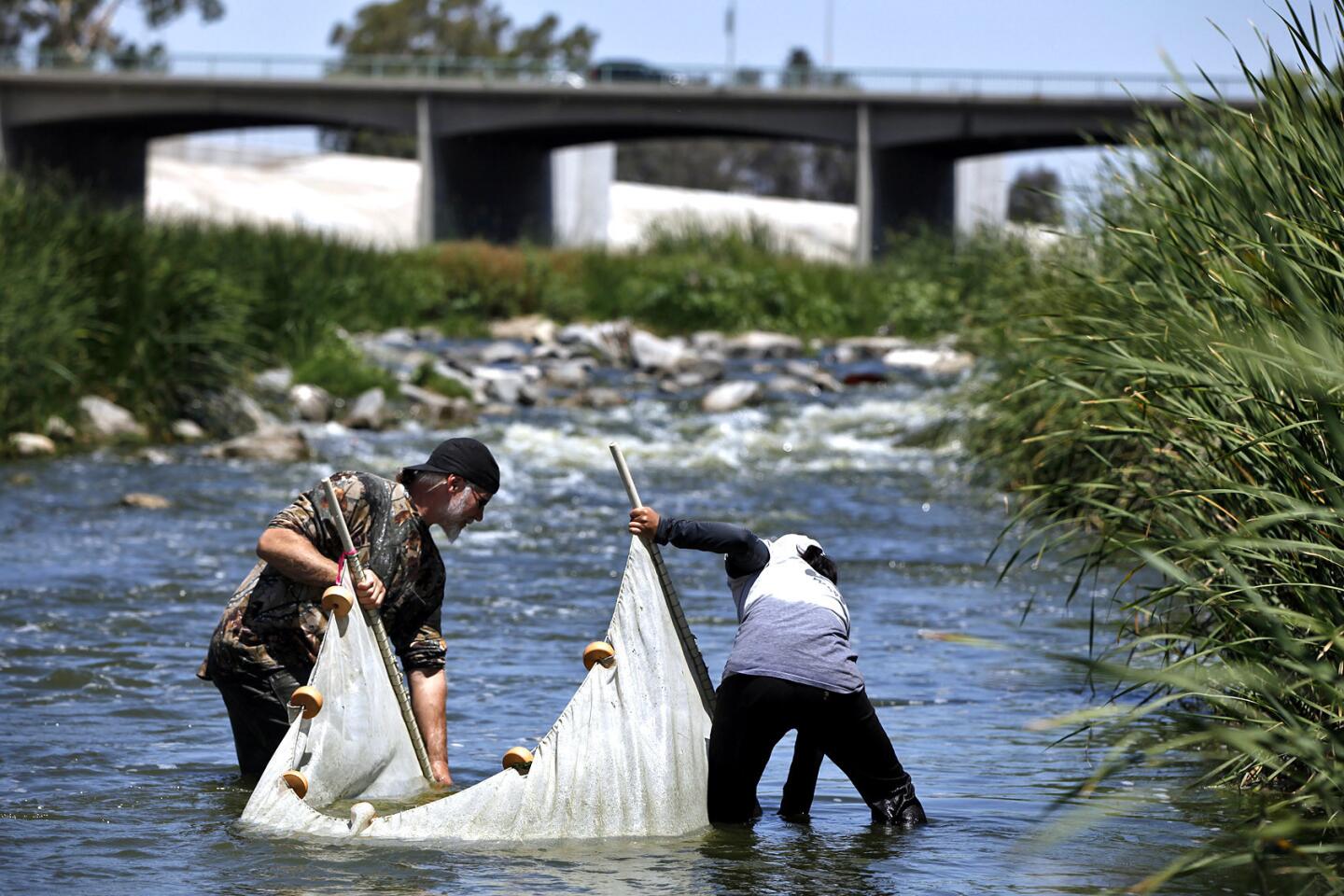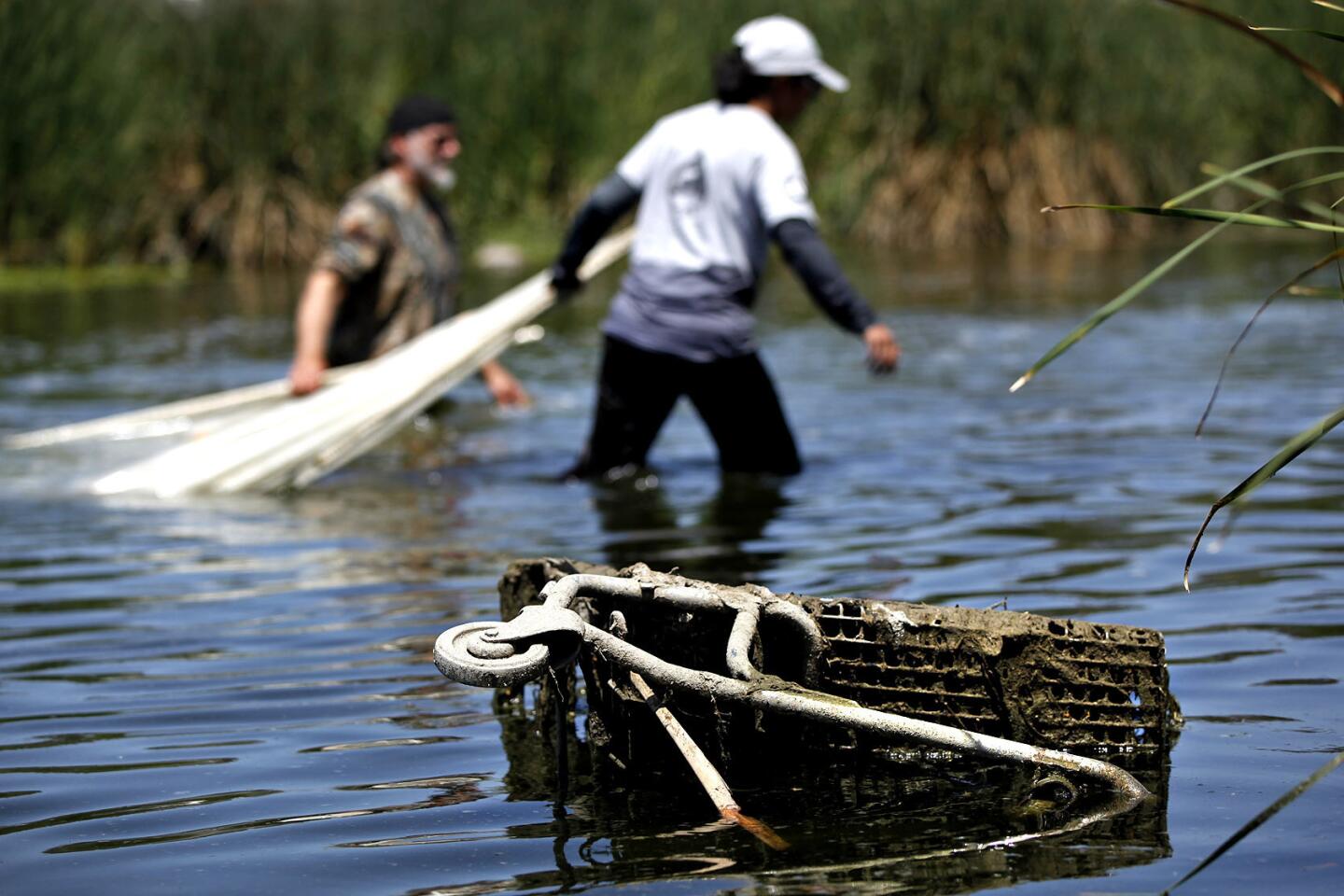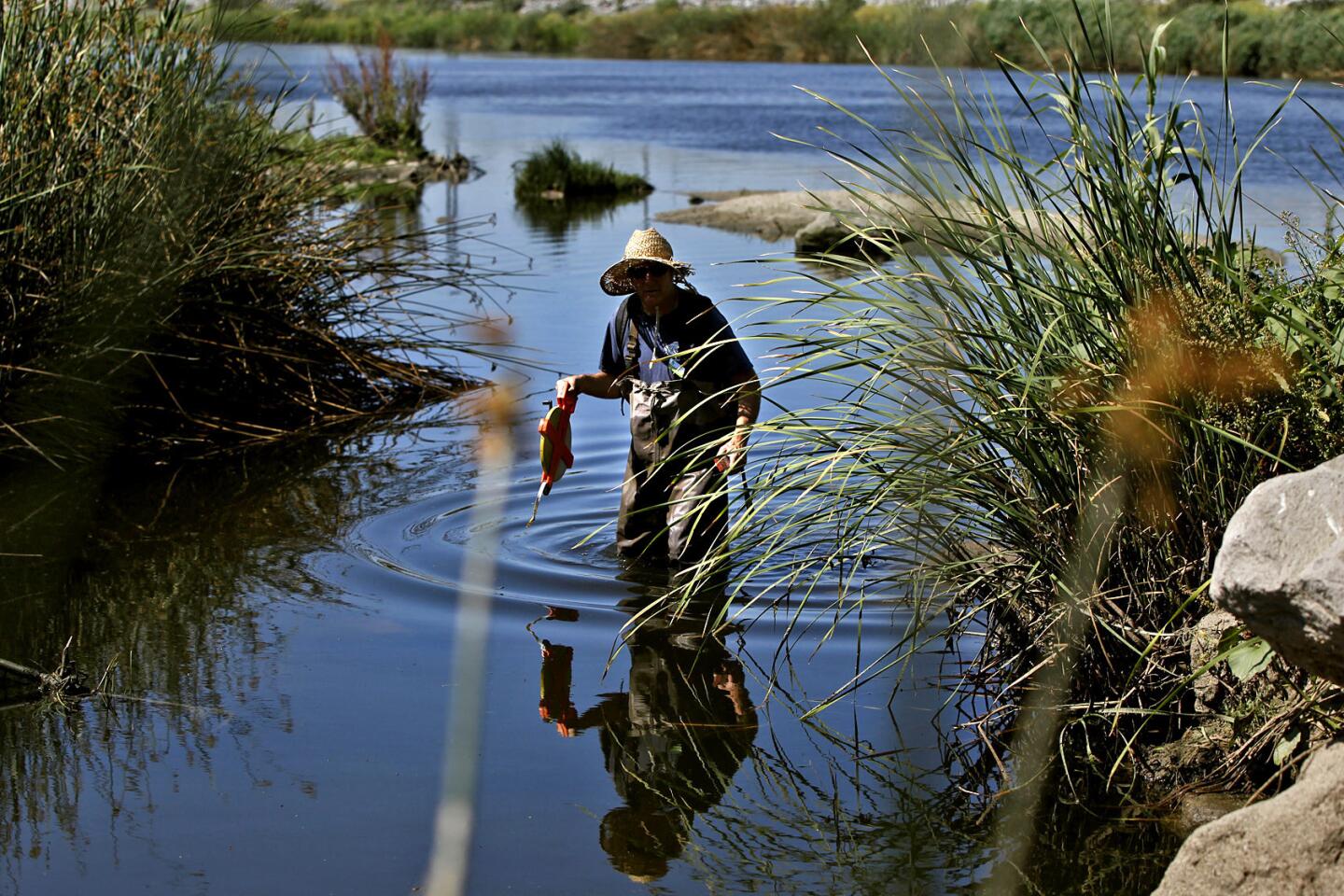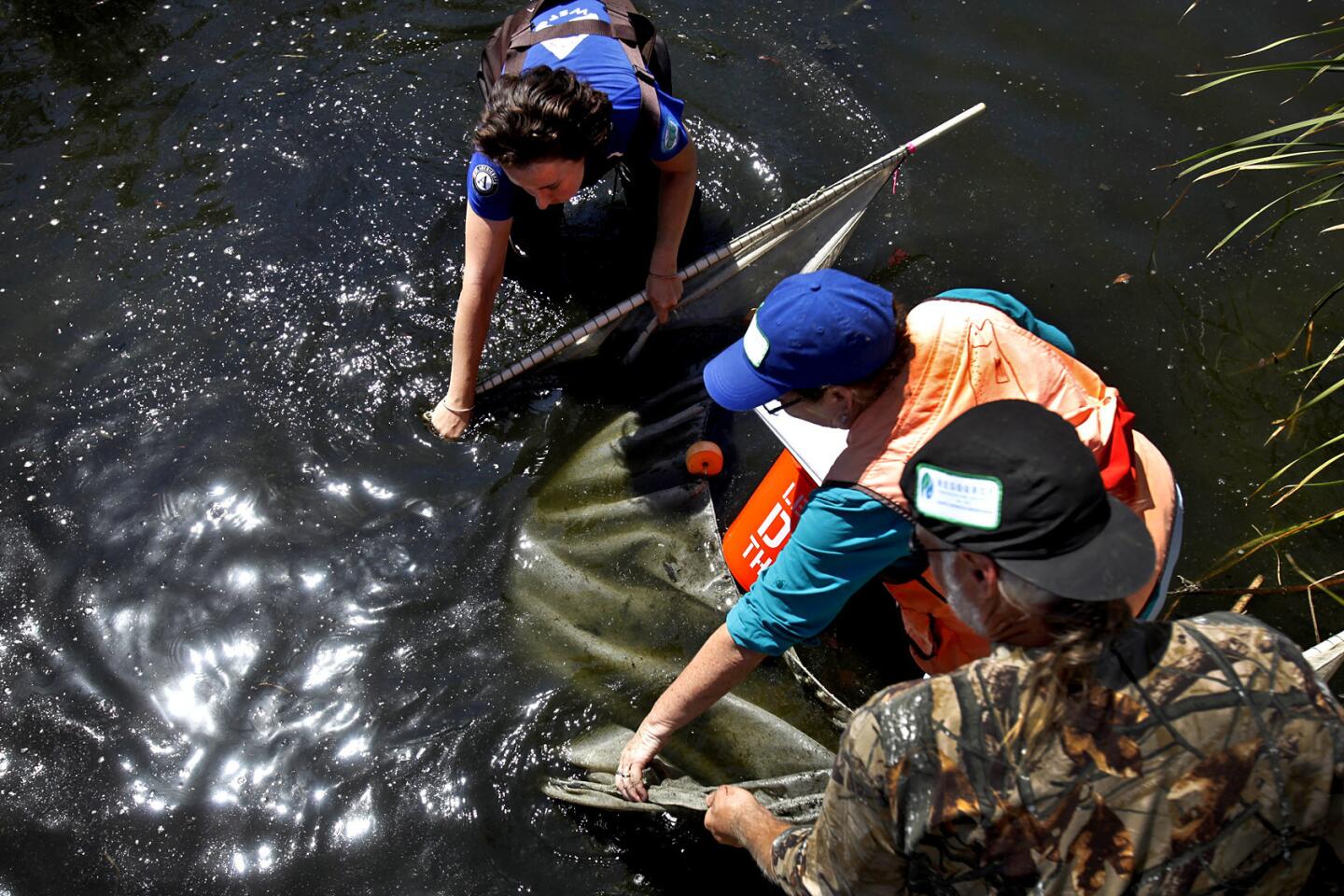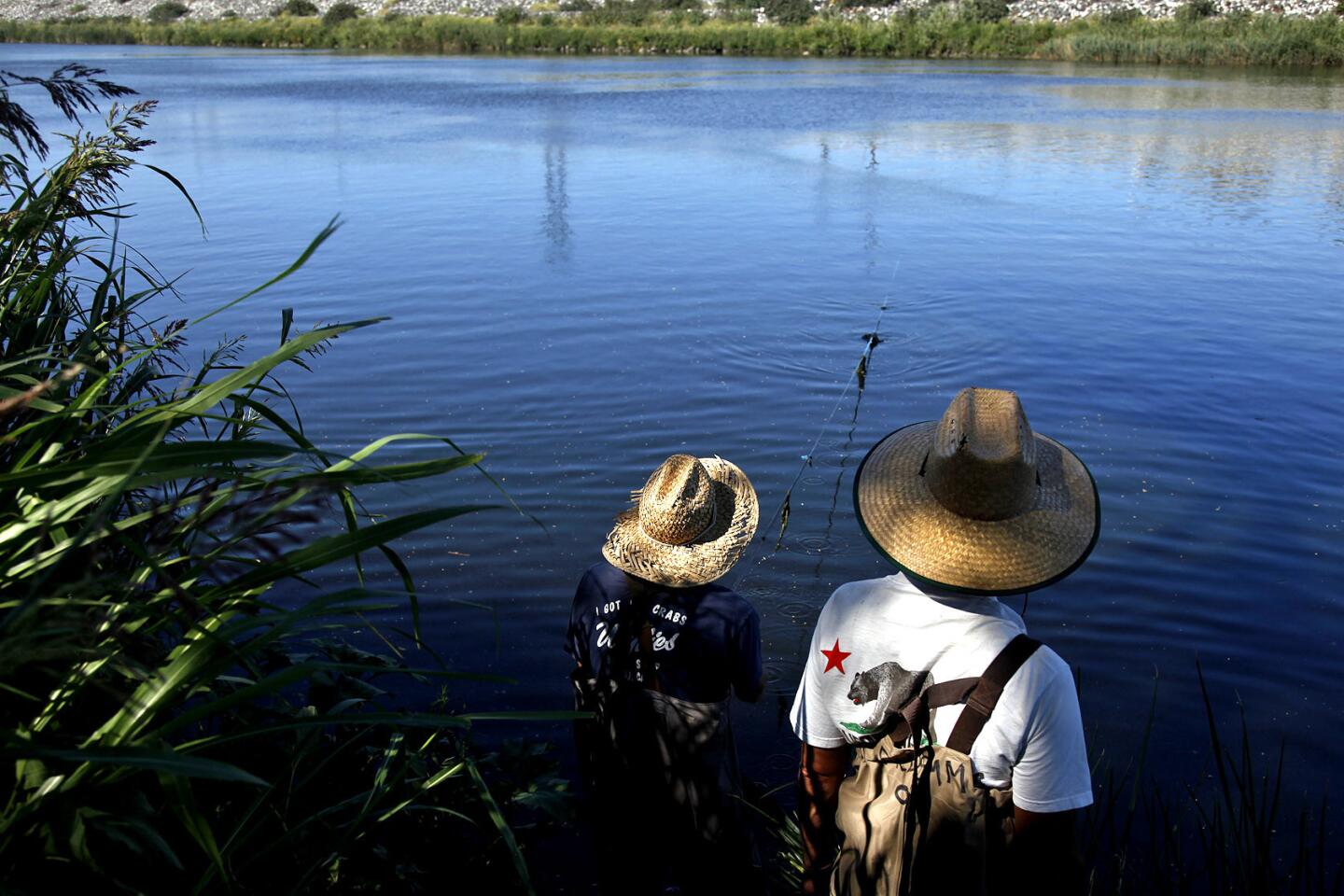Searching for elusive steelhead trout in the Los Angeles River
On a recent sweltering weekday morning, environmental scientist Rosi Dagit waded into the murky water at the mouth of the Los Angeles River. Leaning hard against the current and trying not to slip on the rocks, she began pulling a seine net across a chest-deep pool, hoping to catch a Southern California steelhead trout.
Dagit knew it was a long shot. Southern California steelhead are endangered, with the estimated 500 left on Earth, scattered across coastal waters between San Luis Obispo and the Mexican border. The last one seen in the Los Angeles River was caught off a Glendale bridge in 1948 after that stretch of the river was paved for flood control.
The lower end of the river in Long Beach is closed to public fishing because federal wildlife authorities consider it potential habitat for steelhead. Documenting one trying to make its way back to historic spawning grounds in the heavily industrialized channel would touch off intense scrutiny and possibly tighter federal protections. It also would step up calls to return parts of the river to something resembling its natural state.
“We would know that even though this river has been so heavily degraded, conditions are appropriate for the species’ return,” said Sabrina L. Drill, natural resources advisor for the UC Cooperative Extension. “It would give us more hope of saving it from extinction.”
Steelhead packed spawning pools of the river before it was transformed into a concrete flood-control channel in 1938.
“If we get a steelhead, we’ll treat it as a marvelous emergency,” said Dagit, a senior biologist for the Resource Conservation District of the Santa Monica Mountains. Following federal protocol, the fish would quickly be photographed, measured and returned to the river.
The recent expedition, co-sponsored by the Aquarium of the Pacific in Long Beach and the nonprofit Friends of the Los Angeles River, aimed to map habitat and inventory fish in a brackish, mile-long, soft-bottom portion where treated urban runoff mixes with seawater. Discarded shopping carts, broken concrete slabs and trash are habitat for a variety of species, many of them invasive.
With temperatures hovering in the mid-90s, Dagit and two dozen volunteers, including anglers from the nonprofit Trout Unlimited, slogged through bubbling muck that smelled like rotten eggs, dragging seine nets along strands of cattail, bamboo and willow.
Every 20 minutes or so they hauled in the nets, then crouched together to see what they had yielded. In what quickly became a dreary routine, they came up with a few pounds of mud and algae, and a few dozen baby smelt, barely an inch long.
After a five-minute breather, they moved upstream and tried again.
The steelhead — a distant cousin of salmon — still shows up in small numbers in places such as Ballona Creek, Malibu Creek and three Ventura County rivers.
Steelhead begin life as native rainbow trout. For still unknown reasons, some migrate to the ocean and become steelhead after undergoing physical changes that allow them to return to spawn in freshwater gravel beds.
Steelhead can grow up to 45 inches in length, but the biggest fish seen during the search was a large carp that leaped out of a net and struck conservation biologist Jenna Krug, 31, on the left cheek before melting back into the briny brew.
Small signs of hope kept the search party seining. “The good news is that all these baby smelt mean their mamas and papas are here too,” Dagit said with a smile. “The bad news is that we haven’t seen too much else — but let’s keeping looking.”
In March, Dagit was among 12 women honored by the L.A. County Board of Supervisors and the L.A. County Commission for Women at the 29th Annual “Women of the Year” Awards and Scholarship Luncheon. She currently serves on the Los Angeles County Environmental Review Board, is a member of the Los Angeles County Beach Commission and technical adviser for the California Oak Foundation.
She spends most of her time in the field, tracking and monitoring rare species.
By 1:30 p.m., after a five-hour campaign, the nets had yielded more than 1,000 baby smelt, about 500 mosquito fish, a dead crayfish — and no steelhead.
“Thanks for giving it a try — but we’re officially skunked,” Dagit said, giving her exhausted crew an approving nod. “We’ll try again later.”
More to Read
Sign up for Essential California
The most important California stories and recommendations in your inbox every morning.
You may occasionally receive promotional content from the Los Angeles Times.
